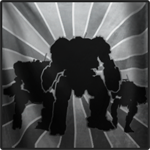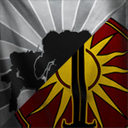Having been a Blackhawk Helicopter mechanic and crew chief in the Army, we had to learn about what is termed Dynamic Rollover. If you land, nose-up, nose-down, or side-long on a hill with a 15-degree or greater angle, the air mass beneath the uphill portion of the rotor-disk has a tendency to condense air exponentially to that of the downhill portion of the rotor-disk, and the mass of the aircraft being unbalanced is further pushed by that heavier air, and the aircraft will roll over, unless of course you're able to recover and get her into the air. Likewise, because it is a natural tendency of pilots to keep the rotor-disk as level with ground as possible, the rotor blades become far more likely to contact the ground on landing or take-off, making the maneuver treacherous, at best.
When I saw the Catapult roll over on its back the other day, it didn't really phase me, but I've been thinking increasingly about it since then, and I have a suggestion or two about arresting that sort of thing.
First, the sheer mass of the 'Mech would pull it closer to the ground and it would hit the bottom of its chin before it would roll over on its back. Second, wouldn't a control program be in place that would force the 'Mech into a crouch, or hull-down position, rather than allowing it to roll over? Even if it did, and the rollover was really fast, wouldn't the same program, as informed by the 'Mech's gyro, force the 'Mech to extend its upper body in an effort to arrest the roll over?
I don't really ask these questions in an attempt to keep my beloved Catapult on its feet, but rather because it seems more like a toy in the game than it does an amalgam of a 65-ton advanced war machine.
Anyway, just sayin'.































